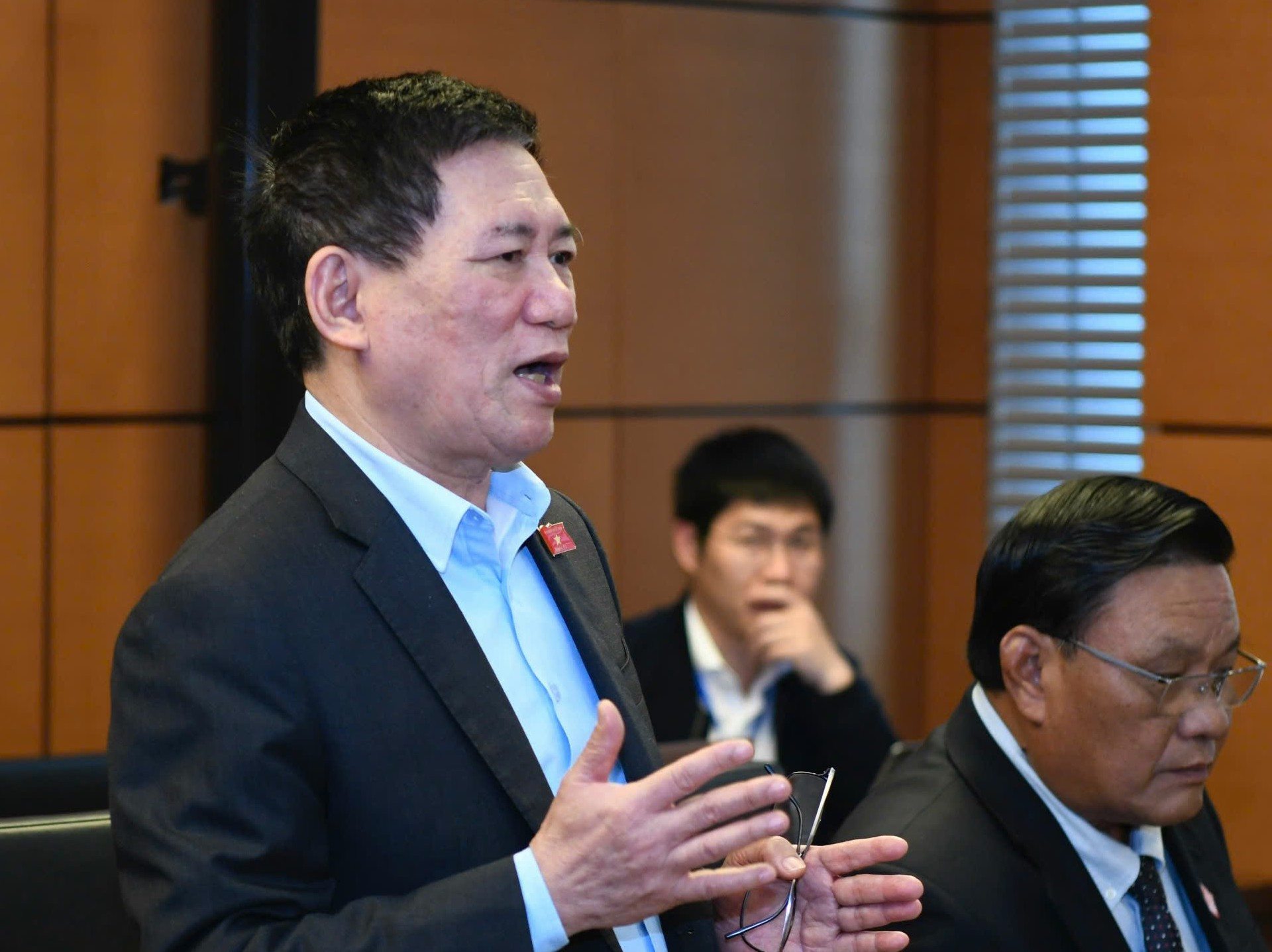Deputy Prime Minister Ho Duc Phoc announced that Vietnam’s public investment for 2025 will approach 900 trillion VND (approximately 36 billion USD), serving as a key driver for economic growth and a catalyst for attracting private and foreign investment.

On February 14, the National Assembly discussed the 2025 Economic and Social Development Plan, which targets a minimum GDP growth rate of 8%. Lawmakers explored various strategies to achieve this ambitious goal.
Balancing revenue, fiscal deficit, and public debt
Ha Sy Dong, Acting Chairman of the Quang Tri Provincial People’s Committee, noted that while Vietnam achieved over 8% growth in 1997 and 2022, its economic momentum slowed to 5% in 2023.
“The goal of 8% growth in 2025 and double-digit growth from 2026 onward presents a significant challenge,” Dong observed.
He warned that global trade tensions, particularly the risk of U.S. tariffs on Vietnamese exports, could threaten growth prospects.
"If we can cut government spending to boost public investment without raising taxes or increasing debt, then the 8% growth target is achievable," Dong emphasized.
However, if necessary, Dong suggested higher revenue collection, fiscal deficit expansion, and increased public debt should only be contingency measures, not primary tools for economic expansion.
He urged the government to focus on cost-cutting measures first before resorting to borrowing or raising taxes, which could burden businesses and limit private-sector investment.
Urgent reforms to accelerate public investment
Tran Van Khai, a senior member of the National Assembly’s Committee on Science, Technology, and Environment, proposed establishing a Special Task Force on Public Investment Disbursement under the government’s direct supervision.
His recommendations included:
Implementing a "fast disbursement, high reward" policy, while penalizing slow-moving projects.
Reducing funding for provinces and ministries that fail to meet disbursement targets.
Strengthening oversight to prevent waste and corruption in public investment projects.
Khai also suggested cutting investment approval timelines by 50% through digital transformation and artificial intelligence to streamline project approvals and eliminate unnecessary bureaucratic hurdles.
Additionally, he called for the immediate removal of outdated business regulations and the establishment of a national one-stop-shop investment portal to simplify administrative procedures.
Public investment as the engine for economic growth
Deputy Prime Minister Ho Duc Phoc highlighted that the government has already planned major economic stimulus measures, citing the 7.09% GDP growth rate in 2024 as evidence of strong economic potential.
"Two key drivers of growth are investment and exports," he stated.
In 2025, public investment will increase by 108 trillion VND compared to 2024, bolstered by an additional 331 trillion VND in surplus budget revenue. After allocating funds for wage reforms, 158 trillion VND will be added to public investment projects, bringing the total investment budget close to 900 trillion VND.
“This level of public investment will create a multiplier effect, mobilizing additional private and foreign investment,” Phoc emphasized.
Infrastructure megaprojects to boost GDP
The government’s top priority is completing 1,000 kilometers of new expressways in 2025, part of a long-term plan to build 5,000 kilometers of expressways by 2030.
Other key projects include:
A high-speed North-South railway, estimated at 67 billion USD.
A railway linking Ho Chi Minh City and Can Tho, improving connectivity to major ports.
Three northern railway lines connecting Vietnam to China.
These infrastructure developments are expected to stimulate trade, reduce logistics costs, and improve economic competitiveness.
Private investment and export market expansion
Phoc also emphasized the crucial role of private-sector investment in sustaining long-term growth.
On the export front, Vietnam aims to preserve key markets such as the U.S., China, and the EU, while simultaneously expanding trade with new markets to diversify supply chains and enhance economic resilience.
Despite global uncertainties, Phoc expressed confidence that Vietnam's GDP growth could exceed 8% if investment and trade policies are implemented effectively.
"The key to success is technological innovation and digital transformation - shifting Vietnam’s economy toward high-tech industries and modernized infrastructure," he concluded.
Thu Hang